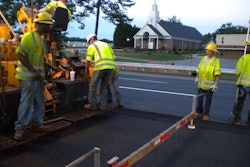 (Photo: modified from Cole Wagoner / Twitter)
(Photo: modified from Cole Wagoner / Twitter)If a bridge falls in Washington State does anyone in Washington D.C. hear it?
Yes, but for how long will its crash echo in their thoughts? There has been, historically, a relationship between a collapsed bridge span and a collapsed attention span.
When a section of the I-5 bridge over the Skagit River in Mount Vernon, Washington, fell into the water on Thursday, I thought of the aftermath of a previous catastrophic bridge failure.
The I-35W Mississippi River bridge was an eight-lane, steel truss arch bridge that carried Interstate 35W across the Mississippi River in Minneapolis. During the evening rush hour on August 1, 2007, it collapsed. The disaster killed 13 people and injured almost 150. It’s possible the I-5 bridge did not simply collapse but fell after a big rig hit part of the bridge–but an Interstate bridge should be able to withstand such an impact without falling.
My thoughts went back to conversations I’d had with two men in Washington D.C. They might have been The Odd Couple, but actually Jim Oberstar and John Mica were the dynamic duo of the pre-2011 House Transportation and Infrastructure Committee, working well together, Oberstar as Chairman and Mica as Ranking Member. Then of course Oberstar lost his re-election bid and Mica took over as chairman until we moved on to Bill Shuster.
They had similar ideas on a surprising number of transportation infrastructure issues, and one of them both publicly, and privately, was to bemoan the fact that just a month after the I-35W collapse a window that opened when the bridge fell, had closed.
With rescue crews still at work in the Mississippi River there was a widespread sense of urgency in Washington, D.C., a feeling that something must be done to make sure no more bridges fell, that if funding was needed it must be found, that if there were inspection or design or construction problems they had to be addressed as soon as possible. Action was needed; something rotten in the state of our bridge infrastructure had been revealed to us via a tragedy and it had to be fixed.
The public had an equal fervor for safe bridges for this one month too. The collapse shook people all over the country. But this is an age of buckets full of worry and many of them reclaimed their place in the public mind. Assurances had come from Washington that what had to be done was being done–and indeed it was.
As Oberstar and Mica both noted sadly, a month later the rhetoric could still be heard but the hottest part of the fire had died. When the urgency left the building, the “fix the bridges” campaign fell back to become the work of committees and task forces and hearings, all certainly essential parts of the machinery we need to fix our transportation infrastructure. The opportunity to for a grand project had slipped through our fingers and business as usual had returned.
On a positive note, Oberstar and Mica also agreed that the fallen bridge’s replacement was a classic example of what could have happened if the fire had kept blazing. The multiple award-winning I-35W Saint Anthony Falls Bridge shows that great bridge work can be done in far less time that we have come to expect for major transportation infrastructure projects, and it can be done through the cooperation of all of the stakeholders and with a goal-oriented mindset that’s so wonderfully old fashioned it could remind you of the way our first interstate builders took to their work back in the 1950s.
Informal reauthorization discussions are underway in D.C. It would be a very effective move to make sure the people that represent you and your family continue to remember the Washington and Minnesota bridge failures and realize the public wants safe transportation infrastructure and would pay for it if their legislation could help ensure it.
If they can remember the Alamo they can remember this bridge collapse and keep it fresh in their minds as they work on the next bill.
And check this out: Better Roads’ annual Bridge Inventory looks at the rate of functionally obsolete and structurally deficient bridges in America and the numbers are startling.










